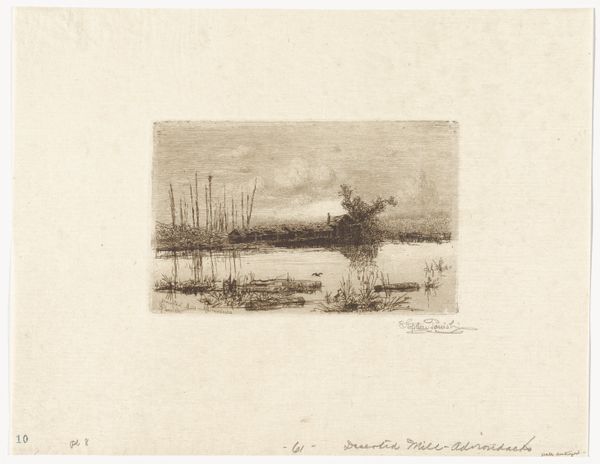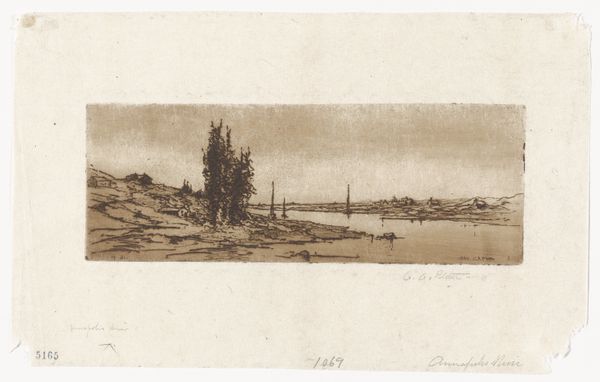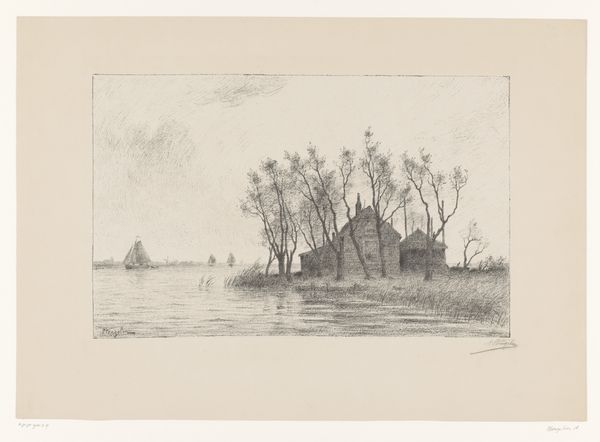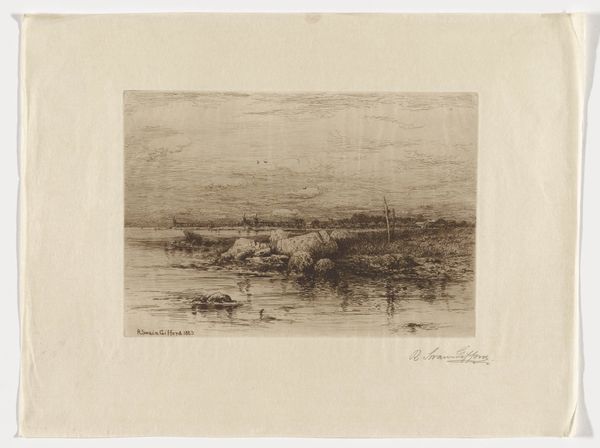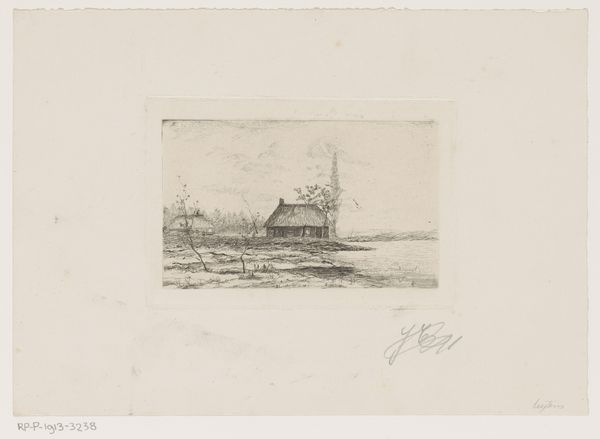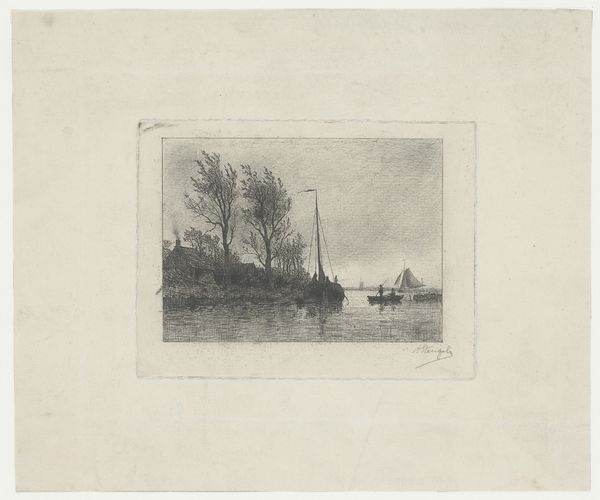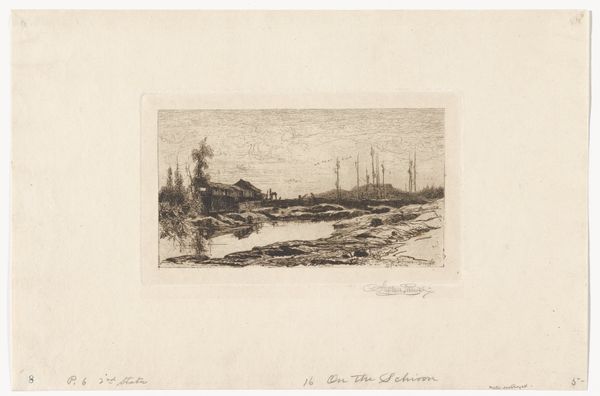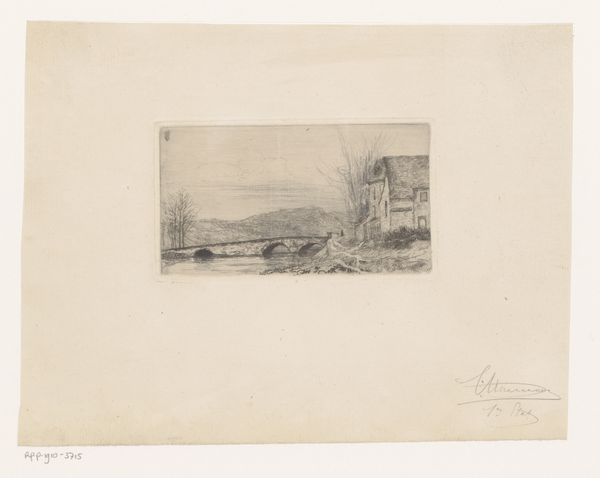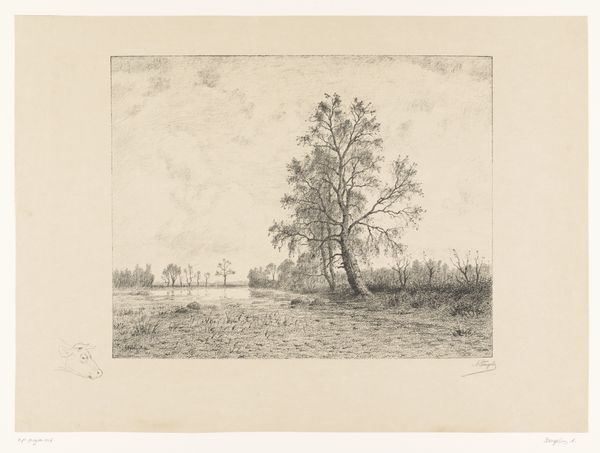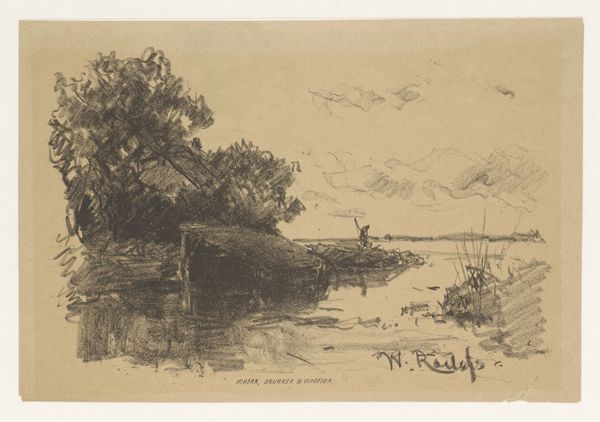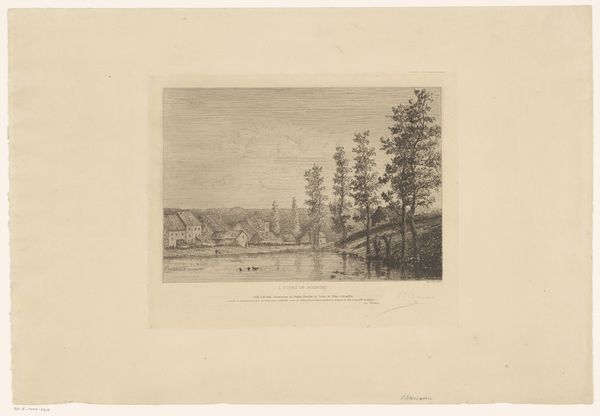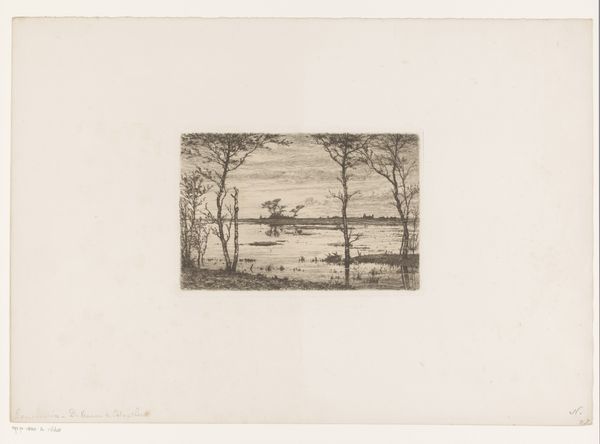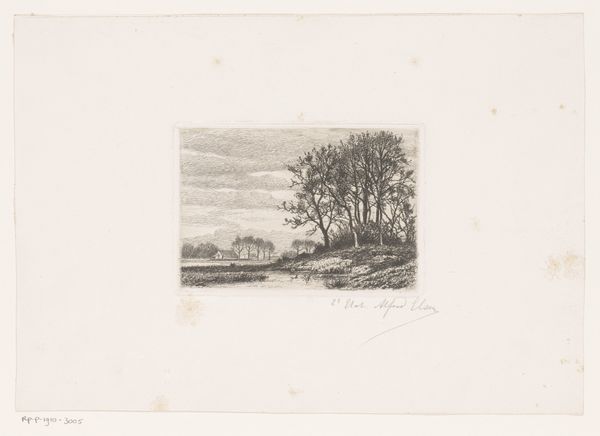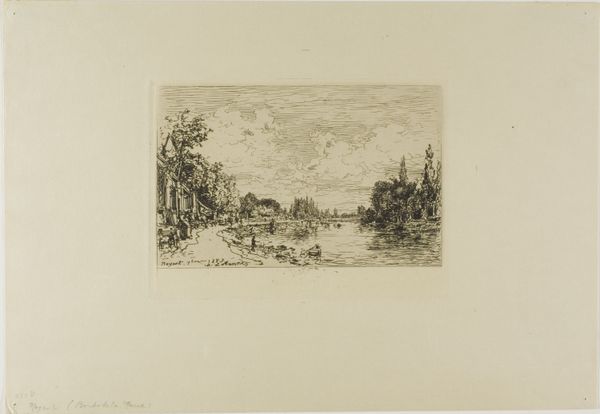
Dimensions: 4 1/4 x 7 1/8 in. (10.8 x 18.1 cm) (plate)7 5/8 x 12 3/4 in. (19.37 x 32.39 cm) (sheet)
Copyright: Public Domain
Editor: This is Stephen Parrish's etching, "Flooded Lands," dating back to the 19th century. It evokes a real sense of stillness. It makes me wonder: how do you interpret this landscape? Curator: The desaturated tones definitely cast a somber mood. The skeletal trees rising from the water's surface strike me as powerful symbols of endurance but also vulnerability. We're seeing the encroachment of water, representing a transformative, perhaps destructive, force of nature, don't you think? How does that resonate with you, considering it was made in the 19th Century? Editor: I suppose the potential encroachment on the land by nature does add a certain tension. Were there specific anxieties around industrial development, perhaps, influencing this imagery? Curator: Precisely. Etchings like this provided an easily accessible visual record of a changing landscape. It documents both a nostalgia for an untouched past, and apprehension towards the rapidly changing environments because of the increasing mechanization. Can you detect any symbols here? Editor: Besides the trees, I suppose the cabin in the background could stand for human impact? Curator: It could. The cabin offers both a symbol of habitation, a sense of intrusion upon the wilderness, as well as an aspiration for harmony between humans and nature. What does this pairing evoke for you? Editor: Thinking about those themes gives the landscape a deeper complexity. It moves beyond being just a nice view and presents an intriguing tension between humanity and the environment. Curator: Absolutely. Art often challenges our perception, leading to a greater consciousness of our place in the world.
Comments
No comments
Be the first to comment and join the conversation on the ultimate creative platform.
